The post Go Green for Back-to-school appeared first on RG Magazines.
]]>It’s the end of the summer and time for the kids to head back to school. So how do you combine school’s three R’s of reading, writing and ‘rithmetic with the planet’s three R’s of reduce, reuse, and recycle? Here are five tips for getting off to a healthy, planet-friendly school year.
- Get new school clothes second-hand.
Kids outgrow clothing very quickly, so buying new clothes from retail stores not only wastes a lot of money for very little value, but “fast fashion” also contributes greatly to both sweatshop labour and environmental degradation from the GMO crops, oil-based synthetic fabrics and toxic dyes used to make them. In fact, the clothing industry is the second largest polluter in the world—second only to oil!
- Inventory your supplies before buying more.
Take a careful inventory of the school supplies you already have that can be used again. Do you have extra packs of pencils, or barely used notebooks? Do you really need a new ruler? Is last year’s backpack still fully functional? Is that lunchbox still in great shape? Reduce your consumerism and avoid last-minute impulse purchases by making a list of what you really need before you go to the store — and stick to it!
- Choose non-toxic and eco-friendly school supplies.
PVC, also known as vinyl, contains chemical additives including phthalates that are linked to asthma, learning disabilities, diabetes and other chronic health problems. Congress banned phthalates in children’s toys, yet they are widespread in school supplies like lunch boxes, backpacks and three-ring binders.
Choose backpacks made of recycled PET or natural canvas, and avoid the shiny, plastic models that often contain PVC. (They will last longer, too!)
It’s harder to find binders that are not made of vinyl, but look for brands that are labeled PVC-free.
Some crayons that are imported from China have been found to be contaminated with asbestos. Choose crayons that have been manufactured in the United States.
More and more retailers are carrying eco-friendly versions of every day school supplies, so choose recycled pencils and markers, refillable or recycled pens, and 100% recycled, chlorine-free notebooks and printer paper, too.
- Pack a zero-waste lunch.
By packing a whole food lunch for your child in a reusable lunch box with a reusable bottle of water or milk, you will help reduce the amount of paper bags, food packaging and wasted food your child produces — and they will be so much healthier for it too.
Making a lunch made with whole food (and not packaged, processed food) doesn’t have to be hard or time consuming. Get your kids involved in choosing lunch ingredients, so they’ll be less likely to pitch stuff they don’t want to eat.
- Explain to your kids why you’re making greener, healthier choices.
Making planet-friendly choices when getting ready for school is great, but what is even more awesome is teaching your kids why you’ve made those choices.
Sometimes, explaining how that shiny vinyl dinosaur backpack is full of toxic nasties or why that package of processed cookies pollutes and harms endangered animals is all it takes to calm a complaining child.
Hopefully, because of your thoughtful conversations with your kids, they will grow up to help create an island and a world where such toxic and polluting products don’t exist in the first place.
This article was originally published in the August 2018 edition of the RG Back-to-School supplement.
The post Go Green for Back-to-school appeared first on RG Magazines.
]]>The post What’s in a zero-waste lunch? appeared first on RG Magazines.
]]>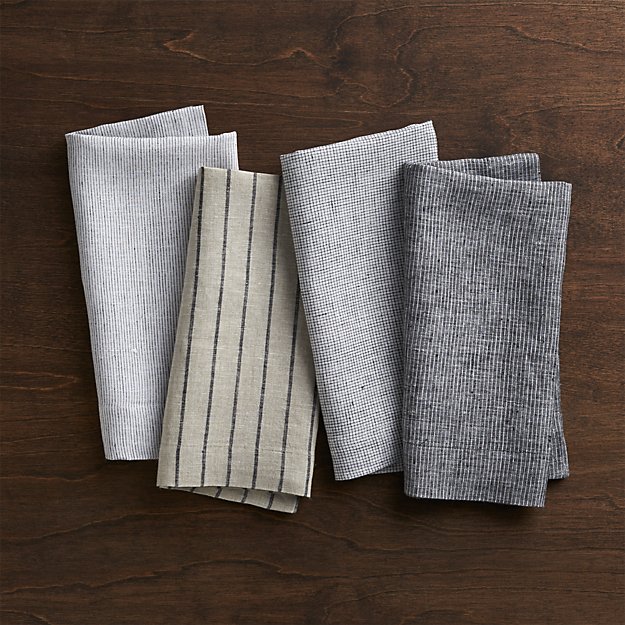 Cloth napkins
Cloth napkins
Paper napkins are used once and then thrown away — hopefully in the trash. You can cut out wasting trees by switching to a cloth alternative. Cloth napkins are a great way to make sure both your child and the environment stay clean. They can be made from old cloth materials you have around your house, or bought at almost any craft fair/show. Clean-up is as simple as throwing it in with the rest of your laundry.
Reusable containers
With all the different foods that you pack in your child’s lunch, spending money on single use plastic bags can be a burden on your wallet and the environment. Reusable containers come in plastic and glass. For a child, plastic is probably your best bet. They come in a variety of sizes to fit sandwiches, fruits and vegetables, snacks, chips, goldfish, condiments — basically anything you would need to put in a lunch box. And they last a long time.
As great as these containers can be, it is important to invest in containers that are BPA (or bisphenol A) free. BPA is an industrial chemical, often found in food containers, and its exposure can have lasting effects on health. Just look for the sticker that says BPA-free.
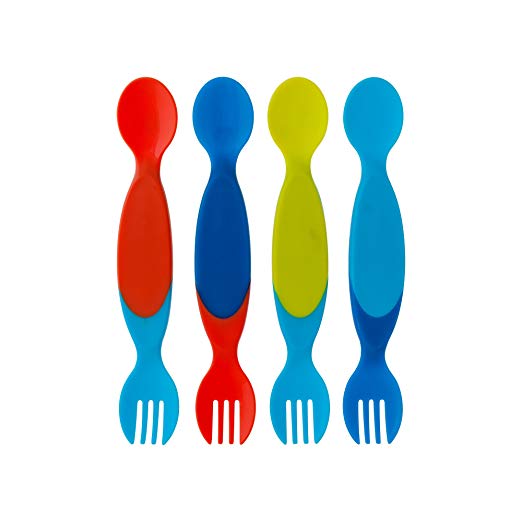 Reusable utensils
Reusable utensils
There are some pretty cool two-in-one utensils to save space in a lunch box. That also means a quick and easy clean up. Plastic utensils are just another thing that end up in the trash. Luckily it takes five seconds to wash a fork or spoon.
Reusable water bottles
Plastic water bottles are the main culprit of plastic waste, and can be easily avoided by using a metal or BPA-free reusable bottle. Reusable bottles come in different sizes and materials as an alternative to juice boxes and plastic water bottles.
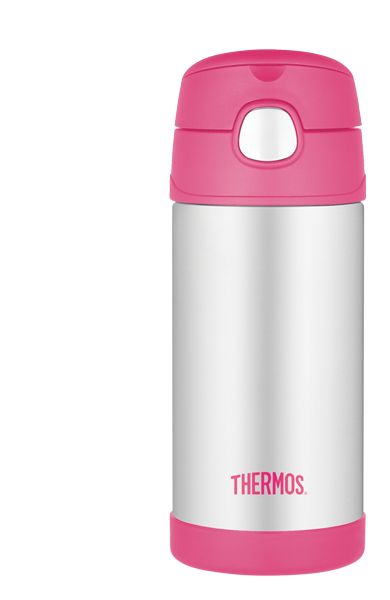 Thermos
Thermos
On cold days you can pack your child warm drinks or food in a thermos. Using a thermos increases the types of food you can give to your child without them needing to use a microwave, using less energy and avoiding carcinogens that are created when heating up food in plastic containers. They can be thrown in the dishwasher or cleaned by hand to be used the next day.
This article was originally published in the August 2018 edition of the RG Back-to-School supplement.
The post What’s in a zero-waste lunch? appeared first on RG Magazines.
]]>The post A Space that Engages Learners… appeared first on RG Magazines.
]]>“BCCL’s most important strategy is to develop a rapport with students to strengthen their social and emotional skills”, said co-founder Cindy Corday.
BCCL follows the UK National Curriculum as well as the International Primary Curriculum (IPC) and International Middle Years Curriculum (IMYC).
“The students enjoy the IPC and IMYC because it’s project-based, which allows them to demonstrate their knowledge in creative and age-appropriate ways. For instance, sketching a poster, using technology to create a PowerPoint presentation, a movie, or a short tableau, adds meaning to the concepts learned. Meaningful real-life connections help engage learners”, Corday said.
The school incorporates a model that personalizes student learning. Students often begin at BCCL behind in their year level and quickly become curious about how they can move ahead. The specialists teach how to advocate for their needs as a learner and the strategies that work for them.
Just as in the corporate world, considerable thought has been given to the overall design of the new space. Floor to ceiling windows overlook Victoria Park and provide ample natural lighting. Small group rooms allow quiet spaces for students to collaborate in brief focused lessons, with teachers and specialists. Executive functioning skills are those learned by doing, and a kitchen within the site will allow a space for students to delve into cooking activities.
BCCL’s holistic approach to creating leaders begins with “Morning Meeting”, which is part of the “Responsive Classroom model”. Students learn collaboration skills and respect –– when they are respectful and kind, others will most often respond mutually.
Along with focused lessons in reading, writing and math, daily activities also include mindfulness, social skills focus groups and physical education. A weekly yoga class is also included in the curriculum.
“It is truly amazing to see students’ confidence increase as they learn different poses and concentrate on their breathing. Students who are new to this way of learning soon settle in and thoroughly enjoy these activities”, said Corday.
BCCL’s enrolment process is unique. Once parents and school administrators determine that the school environment is a good fit, the student spends an “Experience Week” at BCCL and is invited to join in lessons with other students.
Noted comments from visiting students include: “I could choose where I wanted to work – it helped me to concentrate, I learned that stretching before lessons and having a snack while I’m working helps my brain to focus”.
Visiting students often ask, “Are people here always this friendly?” According to current research in The State of LD: Understanding Learning and Attention Issues, National Center for Learning Disabilities, 2017, one in five children in the US have learning and attention issues, but only a small subset are formally identified with a learning difference in school. To compare these statistics with Bermuda, 8,711 children were enrolled in preschool through secondary (noted in TheBermuda Digest of Statistics 2017). If 20 percent of that number had learning disabilities, there could be 1,742 children with learning and attention deficits island-wide.
An awareness of the need for non-traditional teaching methods and a holistic approach is growing. Students whose needs are not being met often fall below grade-level and their self-esteem is negatively impacted. BCCL enrolls students beginning at age seven. Together, we can change the conversation about people who learn differently.
To support their capital campaign that will help with the cost of their relocation, email [email protected]. For more information, visit their website at www.bccl.bm.
This article was originally published in the August 2018 edition of the RG Back-to-School supplement.
The post A Space that Engages Learners… appeared first on RG Magazines.
]]>The post Reading through the “growing-up process” appeared first on RG Magazines.
]]>Here’s a guide to help you find out how your child’s reading skills might progress age-by-age. It’s important to remember that all children progress at different paces and learn in different ways. Talking, reading and writing together every day are great ways encourage self-exploration and discovery. Knowing and being confident in their literacy level makes life, learning and going back to school way more fun –– for both of you.
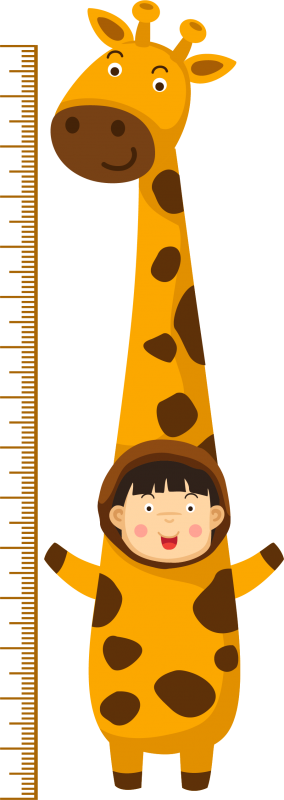 Infancy (Up to Age 1)
Infancy (Up to Age 1)
Children usually begin to:
- learn that gestures and sounds communicate meaning
- respond when spoken to
- direct their attention to a person or object
- understand 50 words or more
- reach for books and turn the pages with help
- respond to stories and pictures by vocalizing and patting the pictures
Toddlers (Ages 1–3)
Children usually begin to:
- answer questions about and identify objects in books — such as “Where’s the cow?” or “What does the cow say?”
- name familiar pictures
- use pointing to identify named objects
- pretend to read books
- finish sentences in books they know well
- scribble on paper
- know names of books and identify them by the picture on the cover
- turn pages of board books
- have a favorite book and request it to be read often
Early Preschool (Age 3)
Children usually begin to:
explore books independently
- listen to longer books that are read aloud
- retell a familiar story
- sing the alphabet song with prompting and cues
- make symbols that resemble writing
- recognize the first letter in their name
- learn that writing is different from drawing a picture
- imitate the action of reading a book aloud
Late Preschool (Age 4)
Children usually begin to:
- recognize familiar signs and labels, especially on signs and containers
- recognize words that rhyme
- name some of the letters of the alphabet (a good goal to strive for is 15–18 uppercase letters)
- recognize the letters in their names
- write their names
- name beginning letters or sounds of words
- match some letters to their sounds
- develop awareness of syllables
- use familiar letters to try writing words
- understand that print is read from left to right, top to bottom
- retell stories that have been read to them
Kindergarten or P1 (Age 5)
Children usually begin to:
- produce words that rhyme
- match some spoken and written words
- write some letters, numbers, and words
- recognize some familiar words in print
- predict what will happen next in a story
- identify initial, final, and medial (middle) sounds in short words
- identify and manipulate increasingly smaller sounds in speech
- understand concrete definitions of some words
- read simple words in isolation (the word with definition) and in context (using the word in a sentence)
- retell the main idea, identify details (who, what, when, where, why, how), and arrange story events in sequence
First and Second Grade or P2-3 (Ages 6–7)
Children usually begin to:
- read familiar stories
- “sound out” or decode unfamiliar words
- use pictures and context to figure out unfamiliar words
- use some common punctuation and capitalization in writing
- self-correct when they make a mistake while reading aloud
- show comprehension of a story through drawings
- write by organizing details into a logical sequence with a beginning, middle, and end
Second and Third Grade or P3-4 (Ages 7–8)
Children usually begin to:
- read longer books independently
- read aloud with proper emphasis and expression
- use context and pictures to help identify unfamiliar words
- understand the concept of paragraphs and begin to apply it in writing
- correctly use punctuation
- correctly spell many words
- write notes, like phone messages and email
- understand humor in text
- use new words, phrases, or figures of speech that they’ve heard
- revise their own writing to create and illustrate stories
Fourth through Eighth Grade or P5-M3 (Ages 9–13)
Children usually begin to:
- explore and understand different kinds of texts, like biographies, poetry, and fiction
- understand and explore expository, narrative, and persuasive text
- read to extract specific information, such as from a science book
- understand relations between objects
- identify parts of speech and devices like similes and metaphors
- correctly identify major elements of stories, like time, place, plot, problem, and resolution
- read and write on a specific topic for fun, and understand what style is needed
- analyze texts for meaning
This article was originally published in the August 2018 edition of the RG Back-to-School supplement.
The post Reading through the “growing-up process” appeared first on RG Magazines.
]]>The post What’s in an internship? appeared first on RG Magazines.
]]>Around December of every year and sometimes even earlier, like many other post-secondary students, I find myself abroad searching for summer work opportunities. Bermuda offers a wealth of internships in the insurance and finance industries, and unfortunately, not much else. While both respected professions, I, myself, am not interested in either. Though few and far between, from the outside, I recognized that internships are important in every field because they increase network, give real-world experience and career foundation, and, not to mention, build your resume. Internships encourage young people to return to the island making them feel like valuable members of society and increase their knowledge of industry in Bermuda.
I’m a graphic design post-graduate student, with a BA in Communication, a shining beacon to the schools I have attended. And yet, I don’t have the same opportunities in Bermuda to gain work experience as others do. I have always had to make a choice: join team insurance or continue towards my passion and hope that the people will recognize the importance of thoughtful design, or that someone will take an interest in my potential, or at the very least, let me shadow for free. I’m here to tell you that good and hard work, does pay off. This summer, I was fortunate enough to have twointernships in my field of study.
My internship working with the RG Magazine team has been incredible. I have been able to use the skills from both my undergrad and current degree seamlessly, and get a more realistic viewpoint into what a career might look like design and also in communications.
What’s in an internship? Now from the inside, I can attest that these programs show what the field is like. Often times, in school, we have these idealistic views of the working world. We are told how we are going to use what we have learned. A relevant internship will either confirm or break down those idealistic views. Either way they give you the reality of the working world. It is not always rainbows and flowers, and I have now experienced the harder side of it all. Deadlines come quickly, stress builds as the amount of projects build and not everyone is going to like your work. Luckily internships also allow you to do real projects without the added pressure of messing up. Mess up, yes, but the idea is to get messy! I have learned more from what I have done wrong than what I have done right.
The work is also in the meeting of key people. The relationships you gain from internships are also connections you could possibly use in your future. For the first time, I have been a part of a team willing to give me valuable information and help with my career path. Not only do I get to practice my craft, but I get immediate help on how to make my work better. I spend my entire day learning from my tasks, from feedback, and from the conversations with those around me. I have been fortunate enough to work with whom I believe is an incredibly inspiring person and mentor who has helped me grow as a person and as a student to her craft.
Until this summer, I was convinced I would not be able to come home after school and find a job because I was under the assumption that there wasn’t room for anyone who didn’t want to work in a bank or in an insurance firm, but there is room.This experience has given me a more optimistic view on my chances of working, settling and being fulfilled in a job on the island.
This December, I hope that I will be able to find more and more internships that cater to students like me –– creative, innovative and culture driven artists. Through this experience, I now know I am in the right field, and feel like I am making positive steps towards becoming my most successful self.
This article was originally published in the August 2018 edition of the RG Back-to-School supplement.
The post What’s in an internship? appeared first on RG Magazines.
]]>The post Learning begins at home appeared first on RG Magazines.
]]>The school year is about to start in September, and we have great respect for those inspirational and dedicated teachers who are passionate about imparting knowledge to their students; and recognize that they may, all too often, be hampered and constrained by bureaucratic burdens and syllabuses that are, frankly, long past their “sell by date”.
Parents, you should bear in mind that, while the school year may seem interminable once it starts, its design is still, in most cases, the relic of a pre-industrial society, and may consequently feel as if designed to interfere with your child’s absorption of knowledge.
While there is no “right way” to teach, or parent for that matter, it should, by now, be accepted as a truism that the greater respect in which the teaching profession is held, the higher the standards demanded of those permitted to teach; and the more discretion they are permitted in how they do so, the more students are likely to learn and the better they will perform.
Even with this, how is an anxious parent to help their child in achieving his or her potential in the face of a system which sometimes seems designed to stifle?
Start at home.
First, set expectations. Any normal child wants to learn. As the saying goes, their minds are like sponges; and in biological terms they have the capacity to encode huge amounts of information almost effortlessly- particularly when young. If a parent calls his or her child “stupid”, they are doing a grave dis-service. Standards need to be set out, explained and applied. Of course, human potential is graded on a curve, but there is increasing evidence that it is not fixed. Setting a high bar for achievement (as long as it is realistic) is a key first step.
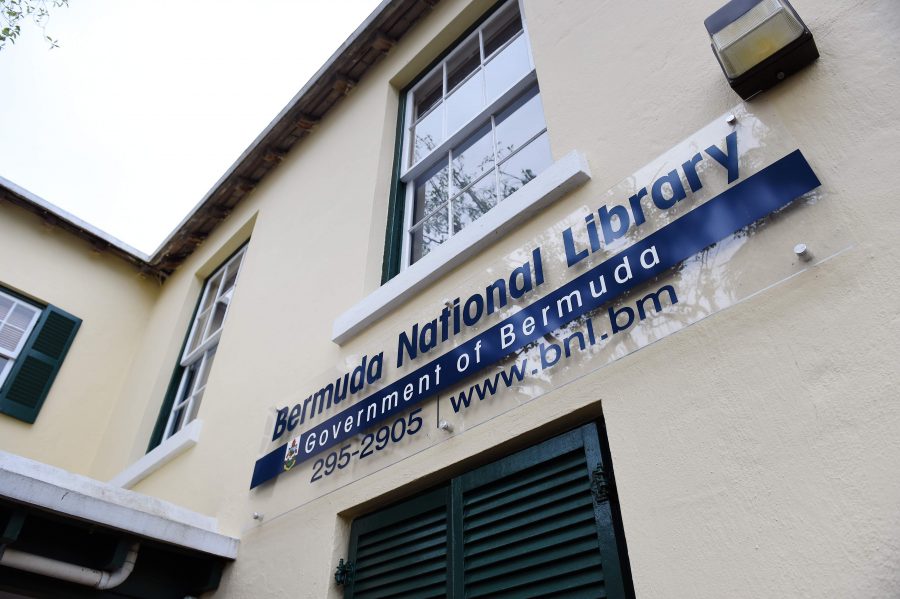
Second, provide the tools and means with which to learn. Encourage reading as an essential habit, which is an undoubted way to learn and become a more rounded person. If you cannot afford books, go to the Bermuda National Library or Youth Library; or create a “book swap” club. Similarly, while much of life seems now to be focused on the use of electronics, the act of writing is invaluable in helping a child channel his or her thoughts and process information. Provide a journal book.
Third, limit the unstructured use of mobile and smartphones during periods of study. They are a distraction. While online learning holds great promise, it needs to be structured and based upon the best and most reputable sources and applications.
Fourth, at the end of each school day take some time to talk to your child about how their day went; what they were taught; what they learnt; and what was unclear. This helps show interest and engagement, as well as act as a means of discerning potential issues or problems.
Fifth, provide enrichment through trips and visits to museums, galleries, and institutes such as the BUEI. If you can, travel with them abroad. Expose your child to other cultures and ideas.
Sixth, challenge them intellectually. Create a programme of learning outside the school, not as a poor simulacrum of the classroom, but rather as an extension of what they have learnt there, which is often set at the level of the lowest common denominator.
Seventh, engage with their teachers. Ask them how you can help them better achieve their goals. And, if a particular teacher is uncooperative or indifferent, complain! Do not accept obstruction.
And last, make your child understand that their schooldays are simply the start of a life-long learning process –– a stage upon the way to becoming the best person they can be.
No doubt, many will say that all this is unrealistic, or that they do not have the time because they work several jobs, or don’t have the money, which makes all this a fantasy. Yes, that may be so. Life is full of constraints and the need to prioritize; but any one of the above suggestions will make a difference to your child’s life.
Does your child not come first in everything? And, if not, why not?
Finally, a quote:
“Our offices are filled with people working their lives out to enrich their boss, government or company.” – Sunday Adelaja.
The goal is to enrich your child’s life, for his/her benefit, not for that of others. A good education, in the proper sense of the word, is still the best way to prepare him/her and provide choices and opportunities. It starts in school, but it should never end.
This article was originally published in the August 2018 edition of the RG Back-to-School supplement.
The post Learning begins at home appeared first on RG Magazines.
]]>The post Opening minds after school appeared first on RG Magazines.
]]>Bermuda has a naturally active community of children. The after-school activities that are offered to them are usually engrained in our culture and –– from Gombeys, to cricket, dance and swimming –– usually stem from the circumstances of the land that we stand on. Along with Bermuda culture and history, our children should have strength, power and confidence –– traits that come from trying new things. We can help them to know their bodies and abilities by letting them explore a host of different activities at a young age. Start by asking them the question, “What do you want to do?” and really listen to the answer.
I want to fight…
Release the fighter in them with Capoeira –– an Afro-Brazilian martial art that combines elements of dance, acrobatics and music. It was developed by African slaves in Brazil and was illegal there until the 1930s. If children are not captivated by the rich history, they will feel the combat movement and rhythm. “Capoeira encourages discipline, helps to teach and instill the value of loyalty, responsibility and self-confidence”, says Ivan Outerbridge (AKA Professor Meio Quilo) from Capoeira Camara Bermuda.
He stresses that, “The importance of Capoeira for children is not only in the historical and cultural aspect, but also in the physical qualities it helps develop; balance, motor coordination, speed, strength. It also helps to develop the potential of each child to learn in life, in school and have a positive influence in their life in general.”
I want to fly…
It’s every child’s dream to fly. As body awareness becomes more important, we want to give our children the opportunities to tune in at a younger age. Aerial Silks is an intriguing discipline that involves two lengths of fabric rigged from the ceiling. Working flexibility and strength, this activity also builds trust through the suspending, falling, swinging and spiraling of their body into different positions.
Charlene Macielag, from Lotus Integrative Health and Wellness Studio, comments,“The challenging nature allows aerialists to develop patience and discipline in their practice, and these skills transfer easily into other areas of their lives (such as academics); our ‘Lotus Buds’ are offered performance opportunities, and these opportunities are great for fostering confidence and presentation abilities”.
I want to build…
Machines are the way of the future! If your child is interested in building, robotics is the booming industry to be in. From cars and smartphones, to thermostats and gaming consoles, it’s all on the path to mechanical engineering. Whether they dream of becoming an aerospace technician at NASA, or just understanding how machines work, open the door with an exhilarating robotics after-school programme. Mid-Atlantic Robotics IN Education (MARINE) combines creativity and team spirit to empower Bermuda’s youth to be champions of the natural environment.
“The program runs from September to March and culminates in an underwater robotics challenge at the National Sports Center”, says the Director of Ocean Academy, Kaitlin Noyes. In the past, “student pilots maneuvered their ROV through a variety of scientifically-themed tasks. Students took part in team interviews about the scientific principals behind their design process and were evaluated for a marketing poster about their ROV, adding an entrepreneurial aspect to the program’s activities”.
An ongoing partnership with the US-based Marine Advanced Technology Education Center has continued to facilitate participation in an annual underwater navigation challenge.
I want to protect…
Draw and shoot. If they enjoy being outside, but in a quiet capacity, archery is a great way to give them fresh air while teaching them focus, balance, coordination and self-discipline. From walking long-distances to carrying so many pounds of equipment, this activity is not short of physical health benefits.
I want to create…
If your child is craving more arts than what they are getting in school, it’s for a good reason. Visual arts help kids to learn and develop important characteristics that they will need as adults, such as creativity, collaboration, decision making, perseverance, focus and accountability. Our galleries have wonderful programmes for a child’s growth in the arts. “Masterwork’s art programmes embrace diverse projects, styles and techniques”, says Education Coordinator, Nuno Patricio. “The outcome of these programmes is to promote critical thinking, creative problem solving, observational and descriptive abilities. The public will develop their sense of creativity and engage artistically”.
Discover new ideas for non-traditional activities that will keep a child active in their bodies, but also their minds – all available in Bermuda. These alternative sports and groups can build confidence by challenging their abilities, open their thoughts to the world around them, and help them to find like-minded and lifelong friends.
This article was originally published in the August 2018 edition of the RG Back-to-School supplement.
The post Opening minds after school appeared first on RG Magazines.
]]>